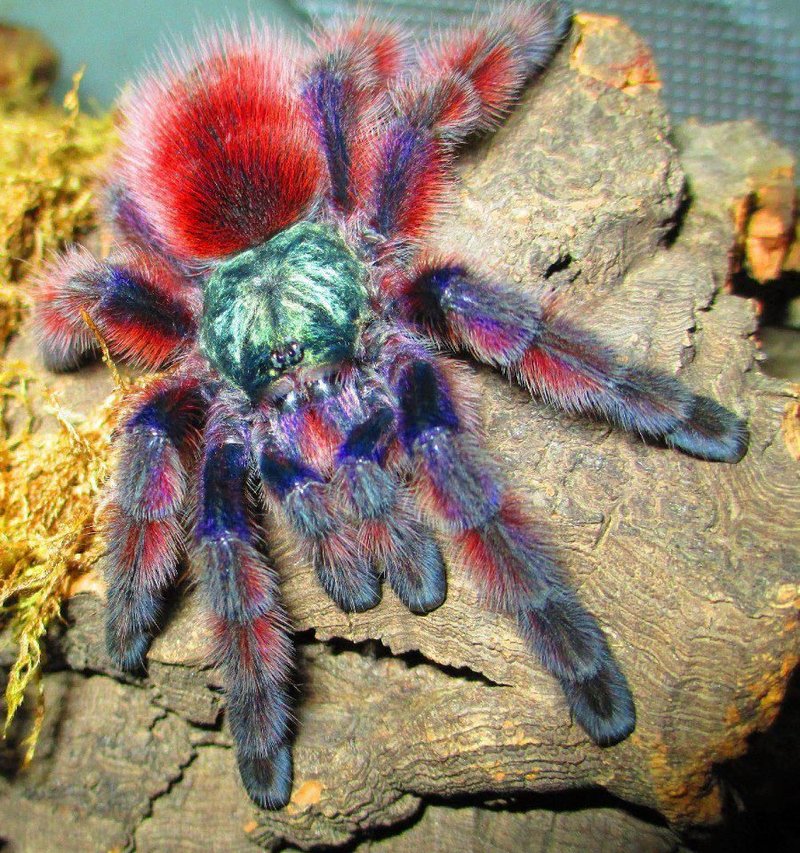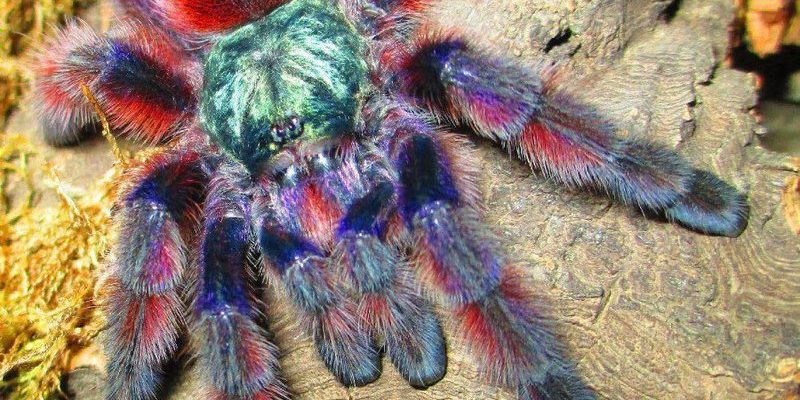
Let’s dig into that. Just as you’d want to know if a new friend has a penchant for biting, understanding the temperament and potential dangers of any tarantula is crucial before making it a part of your life. With a little bit of knowledge, you can decide whether this exotic pet is right for you or if you’d prefer to stick with a fluffy kitten instead.
What is the Pink Toe Tarantula?
The pink toe tarantula, known scientifically as *Avicularia avicularia*, hails from the lush rainforests of South America. Picture a spider that’s not just about scaring you but is also a beautiful part of its ecosystem. These tarantulas thrive in humidity, often living high up in trees.
You might be wondering why they’re called pink toe tarantulas. Well, they get their name from those striking pinkish toes, which really stand out against their otherwise dark, fuzzy bodies. They’re relatively small compared to other tarantula species, growing to a size of about 4 to 5 inches.
In the wild, they are arboreal, meaning they spend most of their time in trees. This gives them a unique hunting style, where they pounce on insects from above. So, when setting up a habitat for one, think tall and spacious, almost like crafting a jungle gym for your new eight-legged friend.
Are Pink Toe Tarantulas Dangerous?
When it comes to danger, the pink toe tarantula isn’t nearly as scary as it sounds. Sure, they have fangs and can bite, but that’s not their first choice. They’d rather hide than confront a threat. In fact, if they feel cornered, they often resort to a tactic called “defensive behavior,” where they raise their front legs and may even hiss.
If they do bite, the venom of a pink toe tarantula is generally mild and not harmful to humans. Think of it as a bee sting but less intense. For most people, it can cause some redness and discomfort, but nothing to panic about. If you’re allergic or have other health issues, you should still treat any bite seriously—like you would with any animal.
To sum it up, while they have the tools to defend themselves, they prefer to be left alone. You’re far more likely to have a peaceful cohabitation with a pink toe tarantula than an aggressive showdown.
Behavior: Are They Aggressive?
You might be surprised to learn that pink toe tarantulas are typically not aggressive. Here’s the thing: they have personalities that differ from what you’d expect from a spider. Most of the time, they’re quite docile. These little guys can be skittish and will often retreat rather than stand their ground.
However, it’s essential to understand that every tarantula has its quirks. Some might be more curious, while others may prefer to stay hidden. If you approach them with a gentle hand and respect their personal space, you’ll likely have a pleasant experience.
If you’re new to owning tarantulas, you might want to avoid handling them too frequently at first. This is not only for their comfort but for yours as well. Just like a shy pet, the more you let them come to you, the more likely they’ll become accustomed to your presence.
Care Considerations for a Pink Toe Tarantula
Taking care of a pink toe tarantula is both exciting and rewarding. Their habitats should mimic their natural rainforest environment. Think tall, with plenty of hiding spots and some moisture. A good substrate like coconut fiber or peat moss can help retain humidity, which is vital for their health.
Humidity levels should be around 70-80%. You can achieve this by lightly misting their enclosure every few days, but be careful not to overdo it. Too much moisture can lead to mold and health issues. Also, keep a close eye on the temperature, ideally between 75°F and 85°F.
Feeding your pink toe tarantula is a breeze! They enjoy a diet of crickets, roaches, and mealworms. Just make sure the prey isn’t too large; it should be about the size of their body. Watching them hunt can be like having your own mini-nature documentary right in your living room!
Handling Pink Toe Tarantulas
If you’re eager to handle your pink toe tarantula, it’s essential to do it safely. Start with one hand under their body for support, allowing them to walk onto your hand. Think of it as inviting a friend over for a coffee chat. Go slowly, and don’t force anything.
Timing is everything. It’s best to handle them during their active hours, which usually is in the evening. If your tarantula seems anxious and tries to climb away, don’t take it personally—just put them back in their enclosure and give them some space.
Many owners find that their pink toe tarantula enjoys climbing on their hands and arms, especially when they feel secure. Just remember that their skittish nature can lead to a quick escape if they feel threatened. So, always keep a close eye to avoid any “where did it go?” moments.
Common Myths About Pink Toe Tarantulas
There are plenty of misconceptions about tarantulas in general, and the pink toe is no exception. One common myth is that all tarantulas are deadly to humans. In reality, unless you’re allergic, a bite from a pink toe is more of an annoyance than anything else.
Another myth is that they are aggressive and will attack anything that moves. Nope! They’re more likely to flee than fight. Their natural instinct is to avoid confrontation. This makes them a perfect choice for beginners looking for a less intimidating pet.
Some people also believe that tarantulas are dirty and carry lots of germs. However, they are actually quite clean animals. They will often keep their habitat tidy, removing uneaten food and waste. Just like with any pet, regular cleaning and proper care will keep their environment healthy.
Final Thoughts on Pink Toe Tarantulas
The pink toe tarantula is a fascinating pet choice, especially if you’re looking for something unique and not too high-maintenance. They’re generally not dangerous or aggressive, making them a great option for beginners.
Like a new friendship, it takes time to build trust with your pink toe tarantula. Understanding their needs and behaviors will lead to a rewarding experience for both you and your eight-legged companion. So, if you’re ready to welcome one into your home, you’re in for a treat! With a bit of care and love, you might just find a lifelong friend in this colorful little creature.

